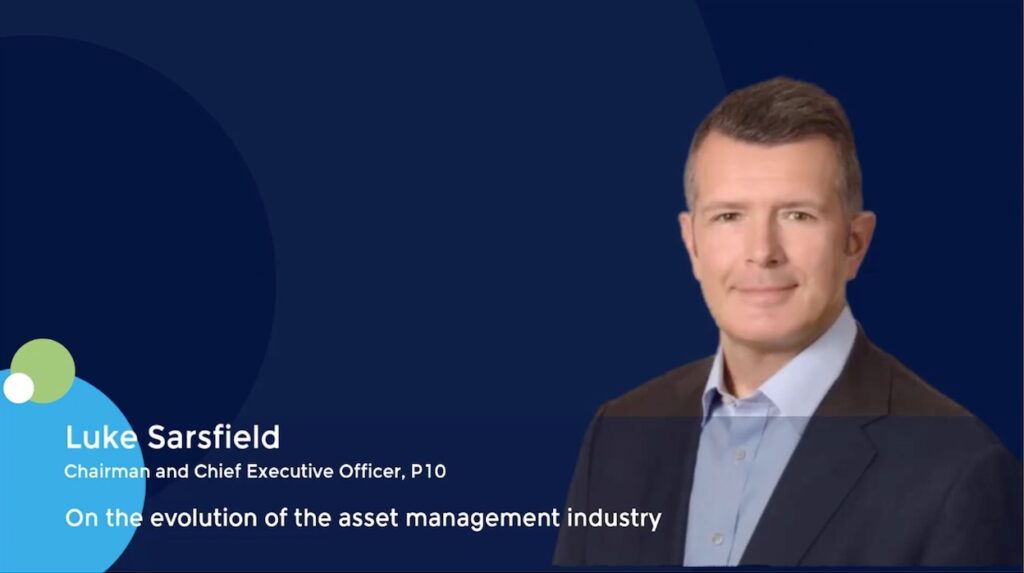Southeast Asia VC industry mobilises as fraud concerns proliferate
Three years ago, a fraud investigation sent Singapore-based fashion platform Zilingo tumbling from a valuation of nearly USD 1bn to complete collapse, embarrassing several leading VC investors in the process. The industry clamoured for tighter due diligence, but this hasn’t stopped Indonesian aquaculture start-up eFishery suffering a similarly high-profile fate.
What actually changed in Southeast Asia’s venture ecosystem post-Zilingo in terms of improved investment screening, founder vetting, accounting standards, regulation, and start-up governance? Answers are scarce among industry participants, but there is a sense that this kind of drama has played out in public enough times to motivate a government response.
Southeast Asia’s fragmented regulatory environment shares in the collective responsibility for start-up frauds. In many markets in the region, private companies are not obliged to file accounts.
Even if there is a Singapore-based holdco structure for a regional business – as was the case with Zilingo and eFishery – deferments on account filings are easily acquired. Subsidiaries of a Singapore-licensed company around the region are not subject to oversight by the Monetary Authority of Singapore (MAS). But could protocols change based on recent precedent?
Last year, MAS repealed the regulatory regime for registered fund management companies (RFMC), having deemed the light-touch registration offering had been abused by the likes of Three Arrows Capital. Similar tightening moves have iced a once freewheeling crypto and blockchain segment.
“Unlike Hong Kong, Singapore can very neatly and quickly amend laws and regulations, so there’s a good chance they’re going to say, ‘This is the second time this has happened in three years, and we’re not happy,’” said one regulatory compliance advisory professional.
“They’re going to jam in additional changes through AML [anti-money laundering] rules because no one is going to say they don’t want to stop money laundering. You have a subsidiary in the region with substantial ownership – that now falls under our AML rules, and we can review it. I would almost guarantee that kind of fallout from this.”
The details of the eFishery case may offer some clues as to how industry standards and priorities will evolve at the regulator, investor, company, and service provider levels.
However, most of the information available to date remains poorly substantiated, emanating from a leaked draft report from FTI Consulting, which took over the company in February, and a confessional interview disgraced CEO Gibran Huzaifah gave last month to Bloomberg.
The start-up was valued at around USD 1.4bn in 2023, having raised more than USD 300m across several rounds backed by the likes of SoftBank’s Vision Fund and Abu Dhabi’s 42XFund, as well as former Zilingo backers Temasek Holdings and Sequoia Capital India, now known as Peak XV Partners. All were either unresponsive or declined requests for comment.
Fraud is said to have occurred as early as the Series A round in 2018. By late 2024, the inflated nature of the financials had been exposed.
Cross-border concerns
Huzaifah told Bloomberg the scheme involved telling investors there was a 2%-3% platform fee payable by fish farmers using eFishery’s feeding devices. This was not actually charged. Meanwhile, debts spiralled due to high defaults in a farmer lending programme presented as low risk. Money movements were said to be obscured by at least five group companies and some 5,000 accounts.
Poor oversight of subsidiary companies from the Singapore holdco vantage point has emerged as a common thread in the reverse engineering of specific actions that allowed eFishery to claim financial metrics it didn’t have. The industry response has reflected this insight with a newly united sense of urgency.
Last month, the Singapore Venture & Private Capital Association (SVCA) led an initiative that featured its counterparts in Malaysia (MVCA), Thailand (TVCA), Vietnam (VPCA), and Indonesia (Amvesindo) to establish best practice guidelines for investors managing the lack of visibility.
“The best way to do this was in an inclusive and detailed way. We can’t just say we need to up our game and leave it to everyone to figure out what that means,” said Shane Chesson, a founding partner at Southeast Asia-focused Openspace Ventures and vice chair of SVCA.
“There’s no point in investors saying, ‘I do better than everyone else,’ or ‘I wasn’t part of the deal.’ While you may not have been involved in that situation, you have probably seen similar situations and you have some good ideas you can kick into the mix.”
Chesson added that in terms of managing extra-territorial jurisdiction specifically, joint buy-in is important. Openspace addresses this issue with some portfolio companies by demanding real-time cash visibility in the form of a board sign-off for every transfer from the Singapore investco to the local opco.
Rama Mamuaya, general partner of Indonesia’s DS/X Ventures and an Amvesindo board member, said the most practical approach is to establish strong governance standards at the Singapore holdco and ensure they cascade clearly to subsidiaries. The approach relies on nuanced shareholder agreements and financial reporting protocols, as well as localized oversight.
“This should be supported by trusted external advisors in each country that can provide real-time visibility into portfolio operations,” he said. “But in essence, investors should stay engaged – not just through board seats, but by maintaining open lines of communication and clear expectations around transparency and accountability throughout the portfolio.”
The regulatory compliance advisory professional predicted that if MAS does not achieve oversight in the immediate term by modifying its AML regime, it will eventually create an entirely new type of license to rope extra-jurisdictional subsidiaries into Singapore rules. More prevalent is the idea that investors will have to manage the issue on their own.
“I don’t think Singapore will be pushing too hard because they’re maintaining a balance. You want money to flow through Singapore. If you’re too strict, people will find other jurisdictions to set up their holdco structures,” said a Singapore-based litigation and international arbitration lawyer.
Standardization push
The governance standards guidance issued by the five VC associations, dubbed Maturation Map, otherwise advises investors to adopt a ramped-up agenda for demanding financial updates and related disclosures, constructing boards, and establishing whistleblower mechanisms, among other stage-based moves.
Active, post-deal diligence is a key pillar, as is digitalisation of cash oversight, development of external advisor ecosystems, and enhanced accountability regimes.
Enforcement and implementation costs are often the practical sticking points and entail some of the most ambitious recommendations. These include the notion of collective procurement of advisory services whereby stakeholders can mitigate financial burdens while enhancing overall market standards.
“We have implemented some, but not all, of the suggestions in MDI,” said Donald Wihardja, CEO of MDI Ventures and an Amvesindo board member.
“But the idea also is to create standardized terms for what we have done that acknowledge that there are different levels of governance – such as annual audit and independent board members – and it’s better if we can have an agreement of what the operating definition of each level is.”
The timing of the launch of Maturation Map signals concern that start-up fraud in Southeast Asia is not only more difficult to manage than in developed markets but also rising in frequency.
This is a difficult observation to nail down in numbers. However, there is some statistical support in the idea that a recent uptick in governance blow-ups betrays the less disciplined deployment of the pandemic boom years.
Combined early and growth-stage investment in Southeast Asia reached never cracked the USD 10bn mark until 2021, when it jumped to USD 21.6bn, according to AVCJ Research. That figure simmered to a healthy USD 12.1bn by 2022 before resettling around the pre-COVID average. Only USD 1.6bn has been invested in 2025 to date.
Henry Chambers, a managing director with Alvarez & Marsal’s disputes and investigations practice in Hong Kong, is fielding a significant increase in enquiries in the start-up space, especially in Southeast Asia. His firm has recently hired a senior fraud investigation professional specifically to support fund manager clients.
“Historically, our work had always been lawyer driven – now we’re getting enquiries direct,” Chambers said. “We have consistent flow of work from PE firms, but because of the eFishery case, we are now getting much more inquiries from VC firms in particular.”
Targeting transparency
Service support from the likes of A&M in this environment has shifted toward integrity due diligence, which is said to pick up red flags uncovered by conventional financial and operational due diligence. Investigations in this vein can be surprisingly basic such as determining who controls various bank accounts – an effort designed to expose the kind of roundtripping alleged at eFishery.
Technological upgrades are also part of transaction transparency and behaviour control, with Chambers recommending the use of accounting systems that put more eyes on money movements through built-in segregation of duties. He also said data analytics could be used to detect red flags.
David Toh, governance, risk, controls and internal audit leader at PwC Singapore, added that the business of supporting investors with corporate intelligence capabilities and digital forensics is booming, largely because of a lack of information sharing.
Toh confirmed that PwC has taken up the eFishery audit but declined to comment further other than to say the episode has been a wake-up call for investors, founders, and auditors alike.
He attributed the overall environment of increasing governance challenges largely to the dominating influence of founders, CEOs, and CFOs, who despite the recent funding winter for start-ups have continued to set transparency terms and flex a take-it-or-leave-it posture. There is an expectation that investors and auditing firms will push back on this point in the foreseeable future.
Toh estimates that at least 30% of fraud is now exposed via whistleblower channels and that most of his work – including six recent investigations – comes from whistleblower reports. Momentum on this front accelerated following the launch of an investigation last year into alleged misconduct at Singapore Post, which was initially tipped by a whistleblower.
For fund managers, framework considerations in this area include assuring portfolio company boards play a supervisory role, while management handles implementation. Ongoing training, C-suite reclusion, policy-enshrined anonymity and retaliation protection, as well as independent committee leadership are best-practice essentials.
“It’s not just internal whistleblowing but external as well, having it on the website to encourage stakeholders to call out any ethics related business conduct issues early rather than later,” said Toh, who is helping advise the Institute of Singapore Chartered Accountants (ISCA) in this area.
“Overnight, whistleblowing seems to be getting a lot more effective. Once it’s more effective, there are a lot more cases floated up that the board needs to deal with. Many in-house audit functions are not equipped with the right competencies or adequate resources to deal with this. That’s why we get called in.”
Still, auditing shortfalls are part of the equation in start-up fraud cases. Huzaifah of eFishery has reportedly admitted that firms performing due diligence on his company provided advance warning as to which aquaculture sites they were going to check.
Asked whether he had seen any such collusion in his career experience, Toh said he had not, describing it as unthinkably risky. This does not preclude the possibility of simple negligence, however.
“The reality is, an audit in many of these markets by the local affiliates of bigger firms is not the same as a Singapore or London audit. You’re buying into a franchise model,” said a second litigation and international arbitration lawyer.
“We’ve been pretty shocked by the quality of some of the accounting work that we’ve seen on businesses. That needs to be factored into the valuations by the investors when they go in.”
Behavioural issues
The lack of legal consequences in cases of start-up fraud – auditing firms are among the most difficult to pursue – is arguably a significant perpetuator of the trend, perhaps especially in developing markets such as Southeast Asia.
Three investors contacted this story expressed frustration that no one in the eFishery case is likely to go to prison. The observation is that authorities in Southeast Asia’s emerging economies don’t have the resources or incentive to make examples of white-collar criminals, unless it embarrasses a local politician or similar power figure.
GPs have little recourse to pursue companies and entrepreneurs, who are usually financially ruined anyway, and LPs have little inclination to pursue GPs, having acknowledged the high-risk, high-reward nature of the asset class.
A third lawyer said he has occasionally seen LPs pursue fund managers, charging that due diligence was insufficient. However, these are seen primarily as moves to establish leverage with GPs, either to punctuate the LP’s expectations around governance rigour or to secure an allocation in the next fund.
Chambers of Alvarez & Marsal observed that VC firms could be sued under securities laws for misleading statements or omissions made by their portfolio companies, especially if VC members serve as directors or have significant control. They may also face claims if they trade shares of a portfolio company based on material non-public information related to a fraud.
The bigger impediment on curbing fraud in Southeast Asia could be the VC industry’s universal cultural foibles, especially in terms of the investing frenzies that surround a hot deal with the endorsement of a big-name investor.
One Singapore-based investor claimed to have evaded this pitfall last year by declining to join a Schroders Capital-led investment of almost USD 100m in eFishery. The investor was keen to be associated with the global names on the cap table and impressed by their enthusiasm: Schroders was said to be planning to mobilise two funds for the now aborted round.
According to the Singapore investor, the red flags came in the form of a referencing check with a similar company that claimed eFishery’s numbers didn’t add up and an observation made by part of the deal advisory team that Huzaifah was firm about only doing an IPO. Trade sales were off the table. Schroders declined to comment.
Not only is the presence of big-name investors a poor validation of a company’s quality, there is a sense that it can create a false impression about the amount of fraud that is happening in the industry at large.
Vinnie Lauria, a founding partner at Golden Gate Ventures, said his firm has been in situations where a top-tier global co-investor has pressed to keep a financial irregularity in a portfolio company discrete, allowing the accused party to walk away with some money and then quietly shutting the business down.
Lauria said he’s a believer in transparency and communicates such incidents to LPs but concedes that going public is not always in the best interest of the related parties or broader industry.
“The reality is, just because it’s public doesn’t mean it’s getting fair and equitable attention from the public. Transparency can play into nefarious hands if someone is better at controlling narratives in the media.,” he said.
Bigger picture
An LP’s view on all this depends largely on its exposure to the backchannel networks involved and, essentially, the gossip.
“It’s not like European investors are asking questions about eFishery. They’re not that well educated about ASEAN and probably don’t care,” said Eric Marchand co-founder of Southeast Asia fund-of-funds Collyer Capital.
“It doesn’t help that Bloomberg is talking about it, but it’s mostly a story that’s going to impact the judgement of Asia-based allocators. The people deploying capital from developed markets into Asia – that’s who’s going to have heightened concern about Southeast Asia. They might say, ‘Let’s just do even more India and Japan,’ which is unfortunate.”
He added that long-term, investors are seeing fewer instances of fraud in emerging Asia as the region digitalises and matures. Yet there is a double standard by which a fraud in a developing market is considered less excusable than the same crime in a developed market.
Michael Joseph, co-founder of global start-up secondaries specialist Ion Pacific, observed that one of Southeast Asia’s biggest weaknesses in terms of fraud vulnerability versus other regions is company board make-up. He said that when his firm is making an LP commitment, board composition is a top-three line item.
Most start-up boards in the region lean young; Joseph needs to see members who have experienced cycles, including at least one independent before the Series C. Oversight committees and compensation committees need to be in place, meeting twice a year. Quarterly meetings should be in-depth, two-day affairs. Light-touch networking support is not enough.
“The board member seat has gotten romanticized by people who want to feel that they’ve been involved in a company that’s done well, that’s done an IPO,” Joseph said, adding that investors sitting on more than five company boards is another red flag of inadequate oversight.
“If you have a board full of likeminded folks who are looking for that victory lap and not signed up for the reason of actually doing the hard work, asking the hard questions., then what is the board even good for?”













